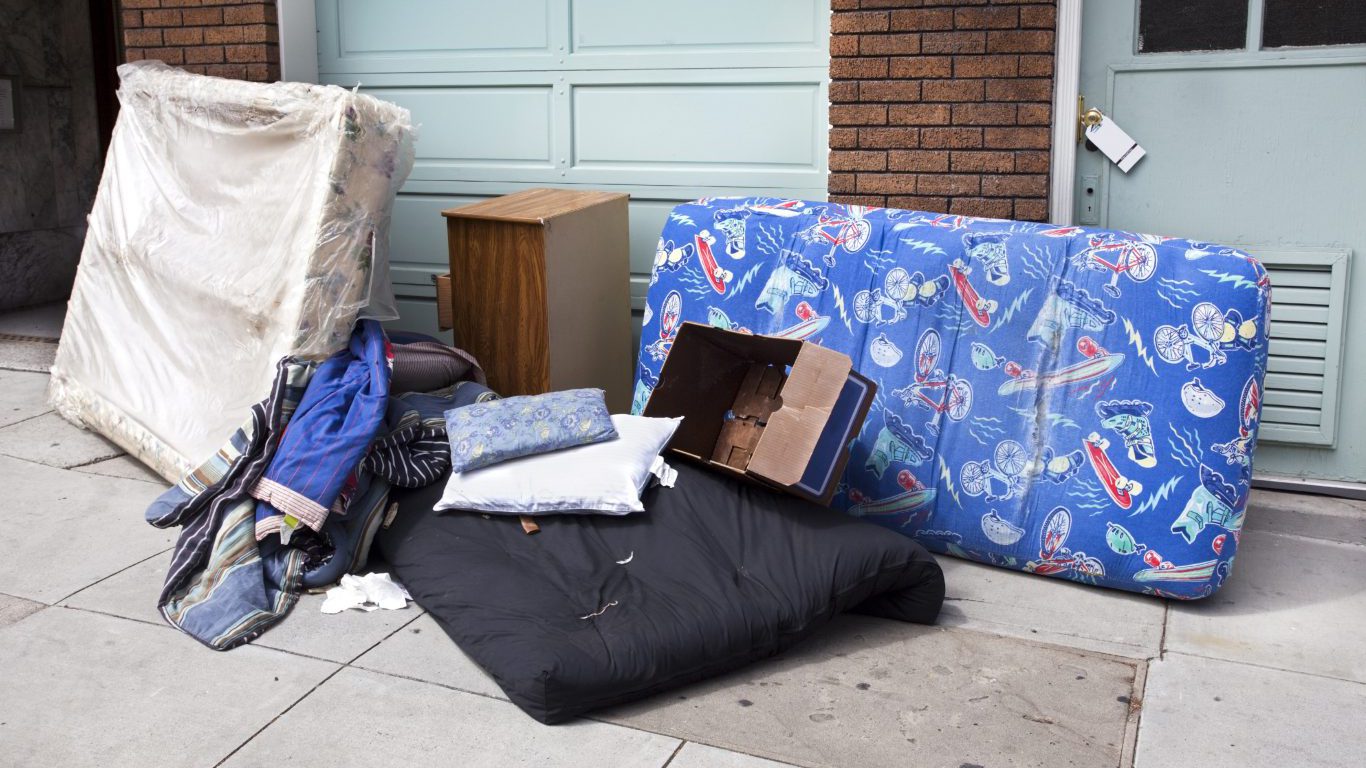
Shortly after the outbreak of COVID-19, the Census Bureau launched a vast initiative to measure the effects of the disease on Americans. It is called the Household Pulse Survey. So far, the results have been released in three phases, which began with the first study that was in the field starting April 23, 2020. The data is released by week
Each weekly report actually covers about two weeks of information gathered by the Census Bureau and other federal agencies. Among the questions asked each week is whether adults live in households where they believe they are likely to be evicted or foreclosed upon in the next two months. The question is asked of those who are behind in their rent or mortgages. And, the answer may be that they feel eviction or foreclosure is “very likely” or “somewhat likely”.
Current data also covers Week 25 and includes the results of questions about income loss, the percentage of Americans who work from home, food scarcity, food insecurity, chances of eviction or foreclosure, difficulty in paying household expenses, whether people have received a COVID-19 vaccine and whether those not vaccinated plan to be.
The work is done in partnership with the Bureau of Labor Statistics (BLS), Bureau of Transportation Statistics, Centers for Disease Control and Prevention (CDC), Department of Housing and Urban Development, National Center for Education Statistics, National Center for Health Statistics, Social Security Administration and USDA Economic Research Service.
Data come from the 50 states, the District of Columbia, and America’s largest metro areas.
In the section of the Household Pulse Survey called “Likelihood of Eviction or Foreclosure”, the state that ranks first is North Dakota at 52.8%. The national average is 31.5%. The state with the lowest figure is Connecticut at 13.6%. Among the largest metro areas, Phoenix ranks first at 54.9%. San Francisco ranks lowest at 12%.
This Is The State Where People Are Most Likely To Be Evicted
| State | Population | Likely to Be Evicted |
|---|---|---|
| North Dakota | 561,016 | 52.8% |
| Arizona | 5,597,268 | 50.6% |
| Indiana | 5,015,550 | 49.0% |
| Colorado | 4,454,718 | 46.5% |
| Michigan | 7,644,458 | 43.6% |
| New York | 14,847,080 | 42.0% |
| Kansas | 2,140,957 | 41.1% |
| Kentucky | 3,344,102 | 38.9% |
| Maryland | 4,586,920 | 38.9% |
| Utah | 2,281,207 | 38.6% |
| Iowa | 2,342,905 | 38.3% |
| Nevada | 2,399,457 | 38.1% |
| Oregon | 3,302,727 | 37.0% |
| Louisiana | 3,431,432 | 36.4% |
| Illinois | 9,546,424 | 34.8% |
| Oklahoma | 2,916,436 | 34.40% |
| California | 29,939,021 | 33.6% |
| Texas | 21,356,906 | 32.4% |
| Washington | 5,890,357 | 32.0% |
| Alabama | 3,717,378 | 31.8% |
| Pennsylvania | 9,776,154 | 30.8% |
| New Jersey | 6,776,822 | 30.7% |
| Missouri | 4,617,880 | 29.8% |
| South Dakota | 642,658 | 29.6% |
| Rhode Island | 817,559 | 29.5% |
| Wyoming | 433,400 | 29.4% |
| Alaska | 524,925 | 29.1% |
| Delaware | 754,637 | 29.1% |
| Wisconsin | 4,438,719 | 28.9% |
| Mississippi | 2,189,670 | 28.0% |
| Arkansas | 2,246,527 | 27.8% |
| Tennessee | 5,221,475 | 27.1% |
| Idaho | 1,343,198 | 26.6% |
| West Virginia | 1,379,576 | 26.1% |
| New Mexico | 1,589,574 | 25.8% |
| Virginia | 6,472,737 | 25.8% |
| Ohio | 8,822,539 | 25.7% |
| Nebraska | 1,418,191 | 25.3% |
| Georgia | 7,955,983 | 23.9% |
| New Hampshire | 1,073,014 | 23.6% |
| North Carolina | 8,017,566 | 22.7% |
| Vermont | 485,485 | 22.3% |
| Massachusetts | 5,324,065 | 19.9% |
| Florida | 17,085,385 | 19.7% |
| Minnesota | 4,241,624 | 18.7% |
| Montana | 822,204 | 17.7% |
| South Carolina | 3,969,123 | 15.6% |
| Hawaii | 1,073,229 | 15.2% |
| Maine | 1,065,620 | 14.9% |
| Connecticut | 2,732,423 | 13.6% |
Click here to see This Is The State Where Most People Are Worried About Losing Homes
The Average American Has No Idea How Much Money You Can Make Today (Sponsor)
The last few years made people forget how much banks and CD’s can pay. Meanwhile, interest rates have spiked and many can afford to pay you much more, but most are keeping yields low and hoping you won’t notice.
But there is good news. To win qualified customers, some accounts are paying almost 10x the national average! That’s an incredible way to keep your money safe and earn more at the same time. Our top pick for high yield savings accounts includes other benefits as well. You can earn up to 3.80% with a Checking & Savings Account today Sign up and get up to $300 with direct deposit. No account fees. FDIC Insured.
Click here to see how much more you could be earning on your savings today. It takes just a few minutes to open an account to make your money work for you.
Our top pick for high yield savings accounts includes other benefits as well. You can earn up to 4.00% with a Checking & Savings Account from Sofi. Sign up and get up to $300 with direct deposit. No account fees. FDIC Insured.
Thank you for reading! Have some feedback for us?
Contact the 24/7 Wall St. editorial team.



